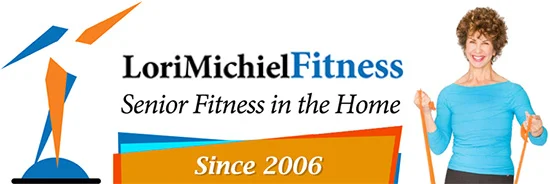Are Your Muscles Tight as a Drum?
 Aging adults, who have been inactive for six months or more and are now considering becoming active again or are post-rehab, might want to consider flexibility training. It is a great way to remain agile and reduce stiffness.
Aging adults, who have been inactive for six months or more and are now considering becoming active again or are post-rehab, might want to consider flexibility training. It is a great way to remain agile and reduce stiffness.
This type of training may lack the high profile of cardiovascular exercise and strength training, but it can improve range of motion, decrease pain and soreness after exercise, improve posture and decrease muscle tension. More importantly, stretching can make the difference in comfort when performing tasks such as putting on a shirt or blouse in the morning, reaching for a cup of tea or coffee or turning one’s head when driving.
Consider combining flexibility training with other activities such as balance, core strength, muscular endurance, resistance training along with some form of cardiovascular exercise into their workouts. They all play an important role in the function and health of our bodies.
What Do the Experts Say?
Research suggests a daily flexibility program should begin with a total of eight to ten different stretches for both the upper and lower body. Although this program might focus on muscles prone to tightness such as hamstrings (back of thighs) and hips (especially after sitting too long, biking, jogging or running), it should concentrate on your individual physical requirements as determined in a physical assessment.
Since it is not uncommon for older adults to have limited mobility (range of motion) due to arthritis, past injury or general inactivity, it is wise to go slowly and stretch carefully.
Various stretching styles can be very personal. Some examples include a static hold, active or dynamic stretching. Static styles are stretches you hold for 10 to 30 seconds and repeat several times. Active style is when you hold a stretch for five seconds and repeat approximately four or five times, increasing the length of the stretch with each repetition. Dynamic stretches are quicker; positions are held for a few seconds. You just have to remember not to bounce.
Whether you prefer one style over another, you should stretch to the point of slight discomfort, while continuing to breathe normally. For best results, stretch a minimum of three days per week, utilizing both upper and lower body movements. And do not forget to stretch cold muscles. Warm up first with some type of cardiovascular exercise (walking, treadmill, marching in place), as “cold’ muscles are much stiffer and harder to stretch than “warm” muscles and could result in injury. Watch the Lori Michiel Fitness videos on Stretching Routines for Your Hips and Restorative Stretching Exercises.
At Least Once a Day Will Do
As an essential part of everyday life, from driving to dressing, cleaning to gardening, lack of flexibility can limit a person’s lifestyle. Stretching will surely complement an activity program and add to your functional fitness, helping you stay agile and independent as long as possible at any age, improving your general health safely and effectively.
